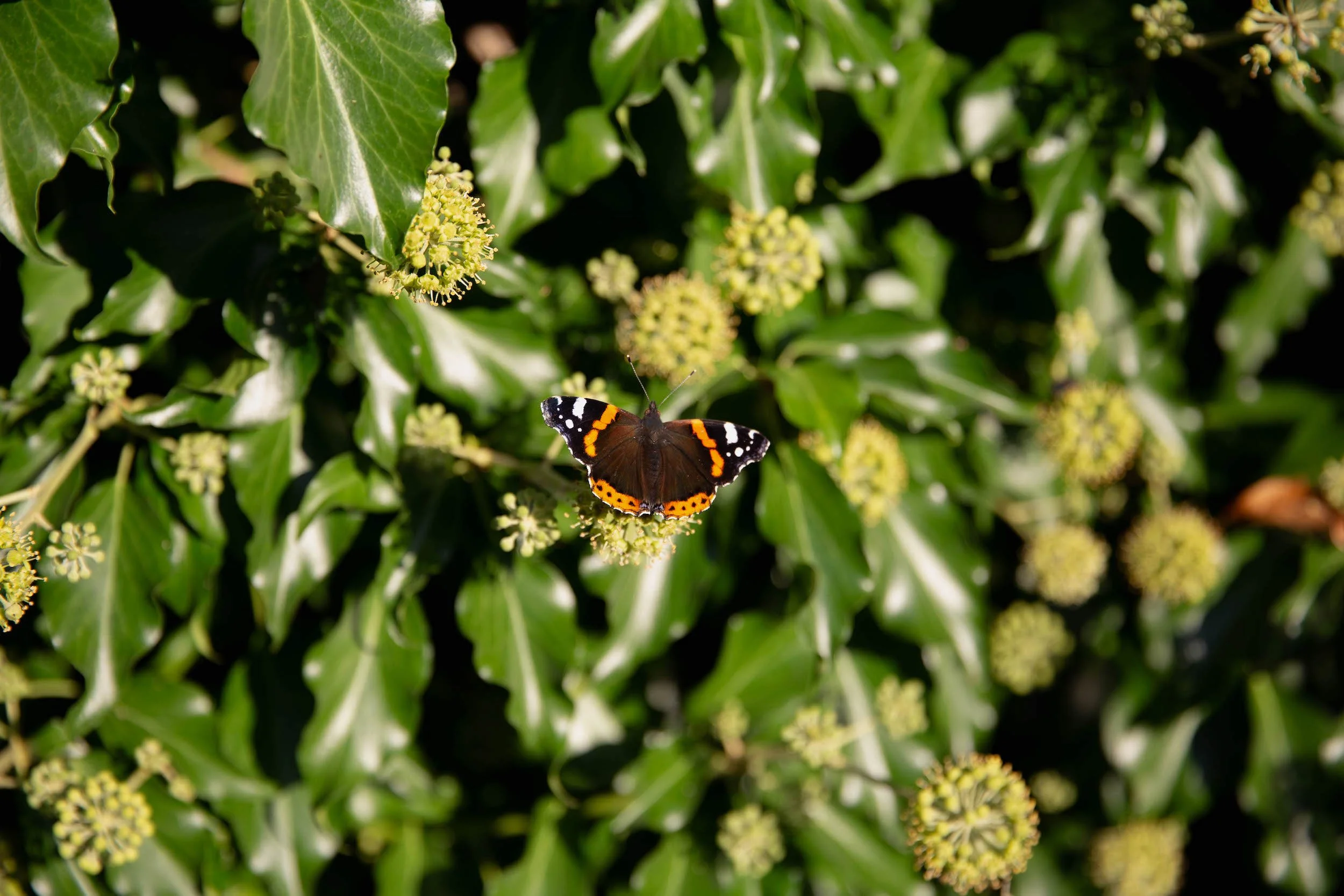Plant guide: ivy
Ivy has something of a bad rep with gardeners. Often thought of us a bit of a thug of a plant, that might rip the mortar from the walls of your house, we know plenty of people who kill off all the ivy in a new garden as soon as they move in. And yes, it is undoubtedly fast-growing, and can quickly climb over boundaries. But the right ivy variety, grown in the right spot, is a hugely beneficial plant in any garden, especially for last season pollinators.
There is a huge amount of different ivy varieties available, with slightly different leaf shapes, and with different shades of green and of variegation (leaves that are flecked through with white or cream)… A bit of research to find a slower-growing cultivar – if that’s what you need for your spot – will easily find a plant that won’t take over so quickly.
Botanical name: Hedera spp.
Plant type: Evergreen perennial. Ivy keeps its leaves throughout the colder months.
Growing conditions: Ivy is a tough plant, and will grow in fairly inhospitable conditions, which is why it’s often used as a climber in spots where nothing else will grow. It can cope with shade, though flowers best in at least some sunlight. It’s tolerant of drier areas and less fertile soil.
Different types of ivy have different preferences for soil alkalinity / acidity. The common English ivy (Hedera helix) does best in a slightly alkaline soil.
Ivy is usually planted in gardens as a climber for a dark and shady spot, where it will grow happily enough. Plant ivy in a sunnier spot, and the leaves turn green and glossy, the flowers are abundant, and it can provide a really important source of nectar, pollen, habitat and shelter for a huge range of wildlife.
How to plant:
Ivy is usually bought as a container plant. To plant out in the garden, dig a hole to the depth of the container, and twice as wide. Gently squeeze the plant out of the plastic pot, place in the soil, angled towards the support it will grow up (a wall, fence, building, or even a tree) so that it starts to grow in the right direction.
Back fill the hole, and gently firm in place. Water well after planting.
See our guide on planting out container grown plants for more detailed information.
Grow with:
Almost anything can be grown along with ivy, which makes a striking green backdrop when growing up walls. The glossy dark green leaves can work as the perfect foil for colourful flowers, such as roses or dahlias. It also looks good with other evergreen foliage plants, think grasses or ferns…
Care:
Ivy is a very low-maintenance plant to grow. As it is self-clinging, it won’t need any support to grow up, but can simply attach to the wall or fence using its adventitious roots (roots that grow out of the stems…)
Once established, it won’t need any watering or other help. However, as it is such a fast growing plant, regular pruning can help to keep it in check.
It’s helpful to know, though, that ivy grows in two distinct ways. the juvenile form of ivy is clinging and will grow up walls and supports quickly. The leaves have their distinctive lobed shapes and the ivy won’t flower. Pruning will keep the ivy in this phase of growth.
Once established as a mature plant, though, ivy leaves change shape, losing their lobes. The plant will start to grow as a bushy shrub, and will produce flowers and berries.
Uses:
Ivy foliage and stems are thick and hardy, which means they last well as foliage in any cut arrangements. Pair them with flowers for a bouquet, or twine together with mistletoe and holly for a winter wreath.
Ivy flowers are a hugely important source of food for pollinators at a time in the garden when not much else is in flower.
Our favourite varieties:
Hedera helix is the common English ivy, which is a great basic.
Hedera helix ‘White wonder’ is a variegated form, with delicate white edges to the leaves.
Hedera helix ‘Glacier’ is a smaller growing ivy, with grey-green leaves and yellow edges. It’s less vigorous than other cultivars so is better for smaller areas…
Hedera colchica, the “Persian ivy” has extremely glossy deep green leaves and will grow almost anywhere. Perfect for a very difficult spot.








